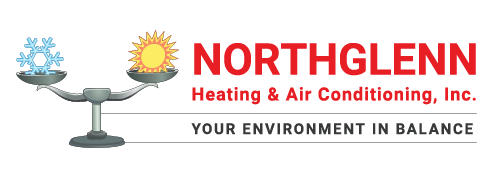
You shouldn’t need to compromise on comfort or empty your wallet to keep your home at a refreshing temperature during summer weather.
But what is the ideal temperature, exactly? We discuss ideas from energy professionals so you can choose the best setting for your loved ones.
Here’s what we advise for the most energy-efficient setting for air conditioning in Northglenn.
Recommended Thermostat Settings for Summer
Most households find placing the thermostat at 72-73 degrees is ideal. However, if there’s a big difference between your indoor and outdoor temperatures, your electricity costs will be bigger.
These are our recommendations based on the U.S. Department of Energy (DOE) and ENERGY STAR®.
While at home: 78 degrees. While that appears hot, there are methods you can keep your home refreshing without having the AC going frequently.
Keeping windows and window treatments down during the day keeps cool air where it belongs—inside. Some window coverings, such as honeycomb shades or plantation shutters, are made to deliver added insulation and enhanced energy conservation.
If you have ceiling fans in your residence, the DOE says you can move thermostat settings about 4 degrees hotter without giving up comfort. That’s since they freshen by a windchill effect. As they cool people, not spaces, turn them off when you leave a room.
If 78 degrees still feels too warm initially, try doing a test for a week or so. Start by raising your setting to 78 degrees while you’re at your house. Then, steadily lower it while adhering to the ideas above. You might be surprised at how cool you feel at a hotter temperature setting.
While away: 88 degrees. There’s no need to keep the air conditioning working all day while your home is empty. Switching the setting 7–10 degrees warmer can save you anywhere from 5–15% on your AC expenses, according to the DOE.
When you get home, don’t be tempted to switch your thermostat colder than 78 to cool your residence faster. This isn’t useful and usually produces a bigger cooling cost.
A programmable thermostat is a good approach to keep your settings under control, but you need to set programs. If you don’t use programs, you run the risk of forgetting to change the set temperature when you go.
If you’re looking for a handy fix, consider buying a smart thermostat. This thermostat works with with your phone, so it realizes when you’re at home and when you’re out. Then it instinctively adjusts temperature settings for the best savings. How much exactly? About $180 each year on heating and cooling, according to ENERGY STAR.
Another perk of using a smart thermostat? You can use your phone to monitor and adjust temperature settings from nearly anywhere.
While sleeping: Around 70 degrees. While ENERGY STAR advises 82 degrees, that could be too uncomfortable for the majority of families. Most people sleep better when their sleeping space is chilly, so that’s why the National Sleep Foundation recommends 60–67 degrees. But that may be too cool, due to your clothing and blanket preference.
We recommend using a comparable test over a week, putting your temperature higher and steadily turning it down to choose the right setting for your family. On cool nights, you could learn keeping windows open at night and relying on a ceiling fan is a better idea than operating the air conditioning.
More Methods to Use Less Energy This Summer
There are additional ways you can spend less money on air conditioning bills throughout warm weather.
- Install an energy-efficient air conditioning system. Central air conditioners only are effective for about 12–15 years and lose efficiency as they get older. An upgraded air conditioner can keep your residence cooler while keeping energy expenses down.
- Schedule annual air conditioner maintenance. Annual air conditioner maintenance keeps your unit operating smoothly and might help it operate at better efficiency. It can also help extend its life cycle, since it helps technicians to pinpoint little problems before they cause a major meltdown.
- Switch air filters often. Read manufacturer instructions for replacing your air filter. A dirty filter can lead to your system short cycling, or run too much, and raise your electricity.
- Measure attic insulation levels. Almost 90% of residences in the U.S. don’t have adequate insulation, according to the Insulation Institute. Most southern climates require 13–14” of attic insulation, while northern climates need 16–18”.
- Have your ductwork inspected. Ductwork that has separated over time can leak cold air into your attic, walls or crawl space. This can result in huge comfort issues in your house, such as hot and cold spots.
- Seal openings, doors and windows. Keep hot air where it belongs by plugging openings. You can also caulk or weather strip doors to trap more conditioned air indoors.
Use Less Energy During Warm Weather with Northglenn Heating & Air Conditioning
If you need to use less energy during hot weather, our Northglenn Heating & Air Conditioning experts can assist you. Give us a call at 303-452-4146 or contact us online for more info about our energy-saving cooling solutions.
